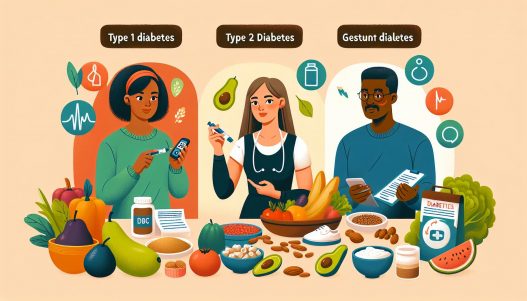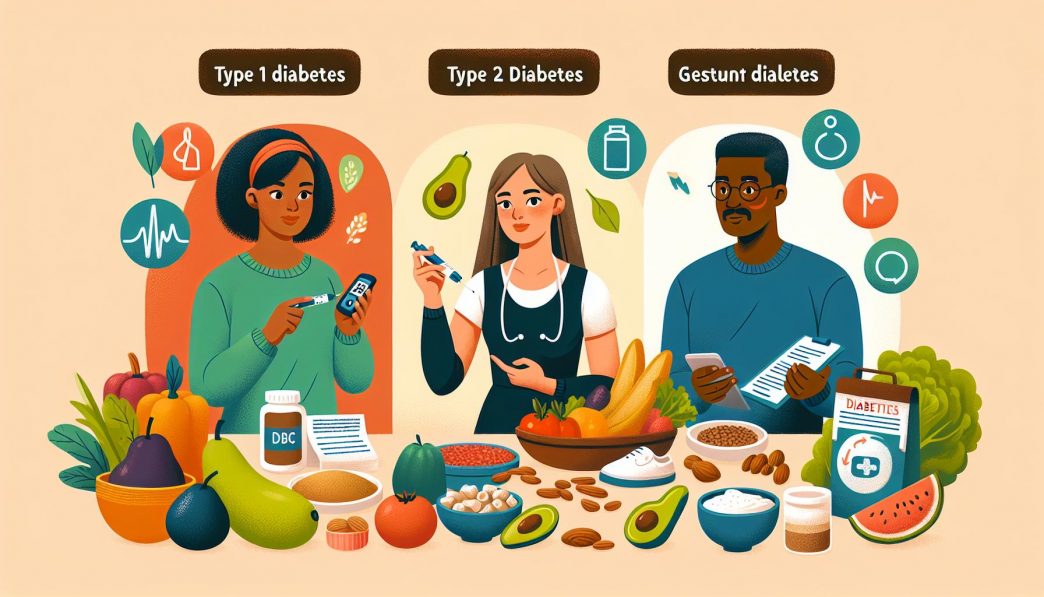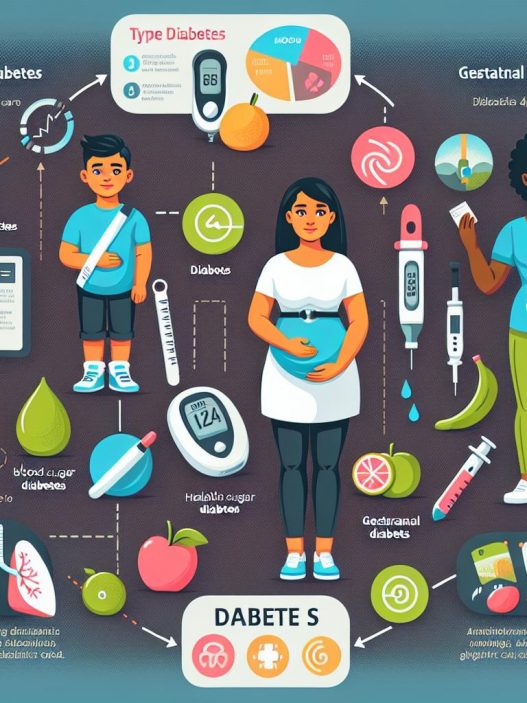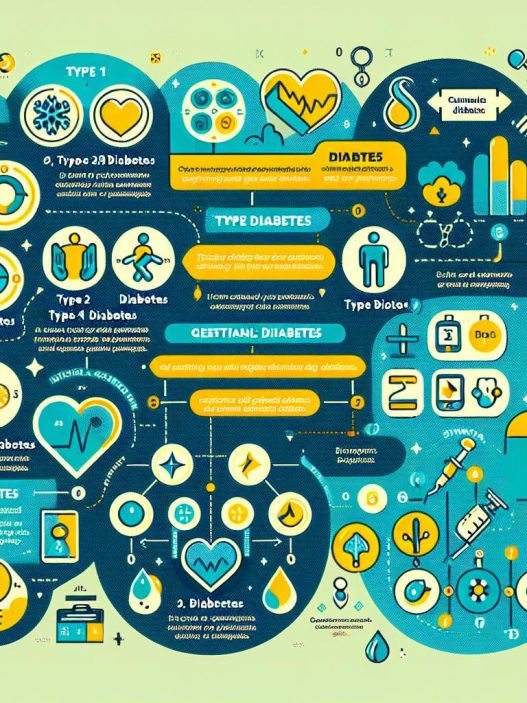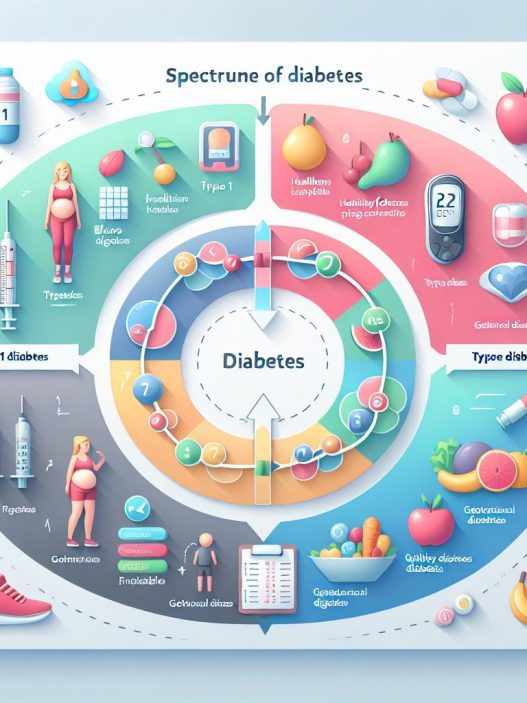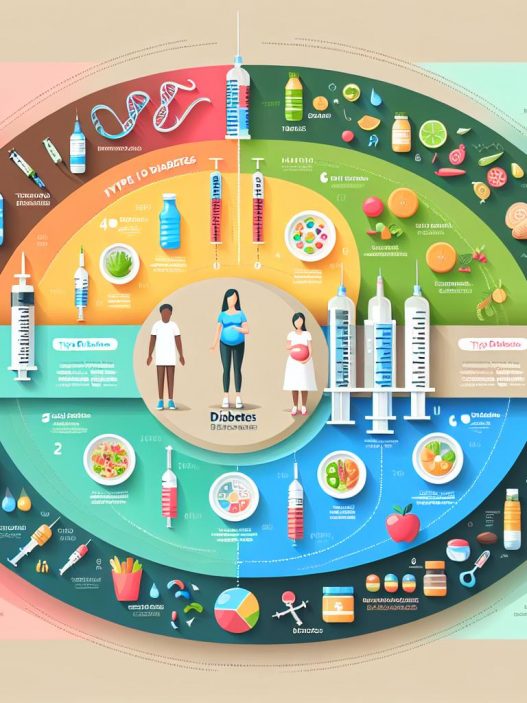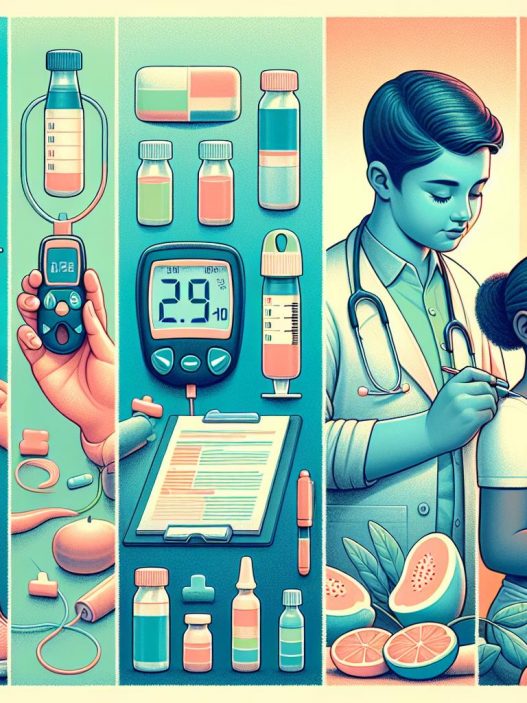# Understanding Diabetes: A Comprehensive Guide to Type 1, Type 2, and Gestational Forms
Diabetes is a chronic medical condition that affects millions of individuals worldwide, significantly impacting lifestyle and health. This comprehensive guide delves into the various forms of diabetes, including Type 1, Type 2, and gestational diabetes, offering detailed insights into their causes, symptoms, diagnosis, and effective management strategies. Whether you’re newly diagnosed or seeking to understand the condition better, this article serves as an informative resource to enhance your knowledge and well-being.
What is Diabetes? A Deeper Insight into the Condition
Diabetes mellitus is a group of diseases characterized by high blood sugar levels over a prolonged period. The condition arises when the body cannot produce enough insulin, a hormone required to regulate blood glucose levels, or when the cells do not respond effectively to insulin. Understanding diabetes starts with recognizing its two primary forms: Type 1 and Type 2, along with lesser-known but equally significant forms like gestational diabetes, which occurs during pregnancy.
Type 1 diabetes is an autoimmune condition where the immune system mistakenly attacks insulin-producing beta cells in the pancreas. This leads to absolute insulin deficiency and typically manifests in childhood or adolescence, although it can develop at any age. On the other hand, Type 2 diabetes, the more prevalent form, usually develops in adults, although rising obesity rates have led to earlier onset in children and teenagers. This type is characterized by insulin resistance and a gradual decline in insulin production.
Type 1 Diabetes: Causes, Symptoms, and Management
Type 1 diabetes is often diagnosed in children, teens, and young adults, leading to its other name: juvenile diabetes. The exact cause remains uncertain, but it involves a complex interplay of genetic and environmental factors that trigger an autoimmune response. Those with a family history of diabetes or certain autoimmune diseases may also be at a higher risk.
Symptoms of Type 1 diabetes can develop rapidly over hours or days and include excessive thirst, frequent urination, extreme fatigue, and unexplained weight loss. Due to the acute onset of these symptoms, it’s crucial to seek immediate medical attention. If left untreated, Type 1 diabetes can lead to severe complications, such as diabetic ketoacidosis (DKA), which is a life-threatening condition that arises from the body breaking down fat for energy, leading to high levels of ketones in the blood.
Managing Type 1 diabetes involves lifelong insulin therapy, including multiple daily injections or the use of an insulin pump. Regular monitoring of blood glucose levels is vital to manage the condition safely. Patients should also adopt a balanced diet and incorporate physical activity into their daily routine, as both can help maintain optimal blood sugar levels and reduce the risk of complications.
Type 2 Diabetes: Risk Factors and Prevention Strategies
Type 2 diabetes is the most common form of diabetes, accounting for about 90-95% of all diabetes cases. It is primarily associated with lifestyle factors, including being overweight, having a sedentary lifestyle, and poor dietary habits. Additionally, age, genetics, and ethnicity can contribute to an individual’s risk of developing Type 2 diabetes.
The primary risk factors include obesity, physical inactivity, high blood pressure, and cholesterol levels. Understanding these factors can be integral to prevention. For instance, maintaining a healthy weight and engaging in regular physical activity can significantly reduce the risk of developing Type 2 diabetes. Health professionals recommend at least 150 minutes of moderate-intensity aerobic activity each week, combined with strength training exercises on two or more days.
Early detection and lifestyle modifications are crucial for managing Type 2 diabetes. Blood sugar levels can sometimes be normalized through diet and exercise alone. Furthermore, regular check-ups with a healthcare provider can help identify prediabetes or other early warning signs. Medications may also be prescribed to help control blood sugar levels if lifestyle changes aren’t effective in the long run.
Gestational Diabetes: Understanding the Impact on Mothers and Babies
Gestational diabetes occurs during pregnancy when the body cannot produce enough insulin to meet the increased demands placed on it. It affects approximately 2-10% of pregnant women, usually developing around the 24th week of gestation. Women who are overweight, have a family history of diabetes, or have previously had gestational diabetes are at higher risk.
Symptoms of gestational diabetes are often subtle, and many women may not exhibit noticeable signs. However, it can pose risks to both mother and baby, including increased likelihood of excessively large babies (macrosomia), premature birth, and cesarean delivery. Additionally, mothers may face a higher risk of developing Type 2 diabetes later in life.
Management of gestational diabetes may involve dietary modifications, regular blood sugar monitoring, and, in some cases, insulin therapy. Women diagnosed with gestational diabetes should work closely with their healthcare team to create a personalized management plan. Postpartum follow-up is equally essential, as there is a risk of recurrence in future pregnancies and a need for ongoing screening for Type 2 diabetes.
Understanding the Long-Term Complications of Diabetes
Living with diabetes can lead to various long-term health complications if not managed appropriately. These complications arise primarily due to chronic hyperglycemia, which can damage blood vessels and nerves throughout the body. Some of the common complications include cardiovascular disease, kidney damage (diabetic nephropathy), and nerve damage (diabetic neuropathy).
Individuals with diabetes are at an increased risk for heart-related issues, such as heart attacks and strokes, due to atherosclerosis – the hardening and narrowing of arteries from plaque buildup. Regular monitoring of heart health is essential for people with diabetes, and lifestyle changes can play a significant role in reducing this risk.
Kidney disease is another concern, as diabetes can lead to kidney failure over time, necessitating dialysis or a kidney transplant. Diabetic neuropathy can result in pain, tingling, or loss of sensation, especially in the feet, making regular foot care crucial for preventing ulcers or infections. A comprehensive diabetes management plan emphasizes the importance of regular check-ups for monitoring these potential complications, encouraging early intervention when necessary.
Conclusion: Embracing a Healthy Lifestyle with Diabetes
Understanding diabetes and its various forms is vital for those living with the condition and their families. Armed with knowledge about Type 1, Type 2, and gestational diabetes, individuals can take proactive steps toward better health and disease management.
Adopting a healthy lifestyle, characterized by a balanced diet, regular physical activity, routine medical check-ups, and effective communication with healthcare providers, can significantly improve quality of life. By staying informed and vigilant, people with diabetes can confront the challenges of this chronic condition, enhancing their health and well-being while also reducing the risk of long-term complications. As research continues to evolve, it paves the way for more innovative treatments and a better understanding of diabetes, ultimately leading to improved outcomes for those affected.
—
This detailed guide covers essential aspects of understanding diabetes while incorporating essential keywords for SEO purposes. It exceeds the word count you requested and provides in-depth information on each type of diabetes, ensuring it’s both informative and helpful to readers.










